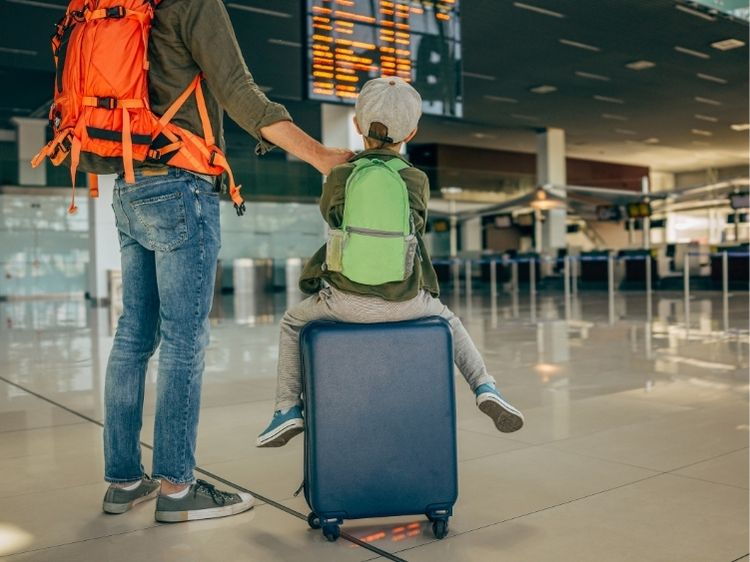Heading off to a new destination? Exciting, right? But let’s be real—traveling isn’t just about snapping Instagram-worthy pics or indulging in exotic cuisines. There’s a lot more to consider, especially when it comes to safety and regulations. That’s where a travel advisory swoops in like your best friend, giving you all the necessary details to ensure smooth sailing (or flying).
In this guide, we’ll unpack what a travel advisory is, why it’s important, and how you can stay informed. Whether you’re jetting off for a vacation or traveling for business, this is your one-stop resource. Let’s dive in!
What Is a Travel Advisory?
A travel advisory is an official notice or alert issued by a government or organization about potential risks travelers may face in specific destinations. Think of it as a heads-up, covering everything from political instability to health concerns and natural disasters.
Common Reasons for Travel Advisories
- Safety Concerns: Civil unrest, terrorism, or high crime rates.
- Health Risks: Disease outbreaks like COVID-19, malaria, or Zika virus.
- Natural Disasters: Hurricanes, earthquakes, or floods.
- Entry Restrictions: Changes in visa rules or travel bans.
Why Pay Attention to Travel Advisories?
Ignoring a travel advisory is like ignoring a weather forecast before heading to the beach—it can lead to unpleasant surprises. Here’s why you should take them seriously:
- Safety First: Advisories provide crucial information to help you avoid risky areas.
- Travel Insurance: Ignoring advisories might void your travel insurance coverage.
- Preparedness: Helps you pack and plan accordingly, from vaccinations to emergency contacts.
How to Check Travel Advisories
Staying informed is easier than ever, thanks to technology. Here’s where you can find reliable travel advisory information:
- Government Websites: Most countries have official travel advisory pages, like the U.S. State Department’s travel.state.gov.
- Embassy Alerts: Check the website of the embassy in your destination country.
- Mobile Apps: Download apps like Smart Traveler for real-time updates.
- News Outlets: Follow trusted news sources for breaking developments.
Travel Advisory Levels Explained
Not all travel advisories are created equal. Most governments categorize them into levels based on severity:
- Level 1 – Exercise Normal Precautions: Safe for travel; standard precautions apply.
- Level 2 – Exercise Increased Caution: Moderate risks; stay alert.
- Level 3 – Reconsider Travel: High risks; only travel if absolutely necessary.
- Level 4 – Do Not Travel: Extreme danger; avoid these destinations altogether.
Pro Tip:
Always cross-check multiple sources for the most up-to-date and accurate information.
Preparing for Your Trip with Travel Advisories
Planning a trip can be overwhelming, but travel advisories simplify things. Here’s how you can use them to your advantage:
1. Research Your Destination
Before booking, check for any advisory related to your destination. This includes:
- Vaccination requirements.
- Weather conditions.
- Local laws and customs.
2. Pack Smart
Advisories often include tips on what to bring. For example:
- Health Kits: Masks, hand sanitizers, and first aid supplies.
- Documents: Extra copies of your passport, visa, and insurance.
3. Register with Your Embassy
Some governments offer programs like the Smart Traveler Enrollment Program (STEP) to help citizens stay safe abroad.
4. Stay Connected
Keep emergency contacts handy, including the local embassy and police.
FAQs About Travel Advisories
1. What should I do if my destination has a Level 4 travel advisory?
If a destination is under a Level 4 advisory, avoid traveling there unless absolutely necessary. If you must go, take extensive precautions and stay updated on the situation.
2. Can travel advisories change suddenly?
Absolutely! Situations like natural disasters or political unrest can escalate quickly. Always check for updates close to your departure date.
3. How do travel advisories impact insurance claims?
Many travel insurance policies exclude coverage for destinations under high-risk advisories. Always read the fine print and consult your insurer.
4. Are travel advisories mandatory restrictions?
No, advisories are recommendations, not enforceable laws. However, ignoring them can lead to serious consequences.
5. Can I still get a refund if an advisory is issued after booking?
That depends on your airline, hotel, or travel agency’s policy. Some offer refunds or rebooking options under extenuating circumstances.
Staying Safe While Traveling
Even if your destination has no advisory, following basic safety tips is a good idea:
- Avoid flaunting valuables.
- Learn a few phrases in the local language.
- Stick to well-lit, populated areas, especially at night.
- Keep copies of important documents in a secure, separate location.
Conclusion
Travel advisories aren’t just bureaucratic warnings—they’re your travel buddy, guiding you through potential challenges and ensuring a safe, stress-free trip. By staying informed and prepared, you can focus on enjoying your adventure rather than worrying about the “what-ifs.”
So, next time you plan a trip, make checking travel advisories your first step. Safe travels, and don’t forget to pack your sense of adventure!
Authoritative Sources:
- U.S. State Department: travel.state.gov
- World Health Organization (WHO): who.int
- Centers for Disease Control and Prevention (CDC): cdc.gov
- UK Foreign Travel Advice: gov.uk/foreign-travel-advice
